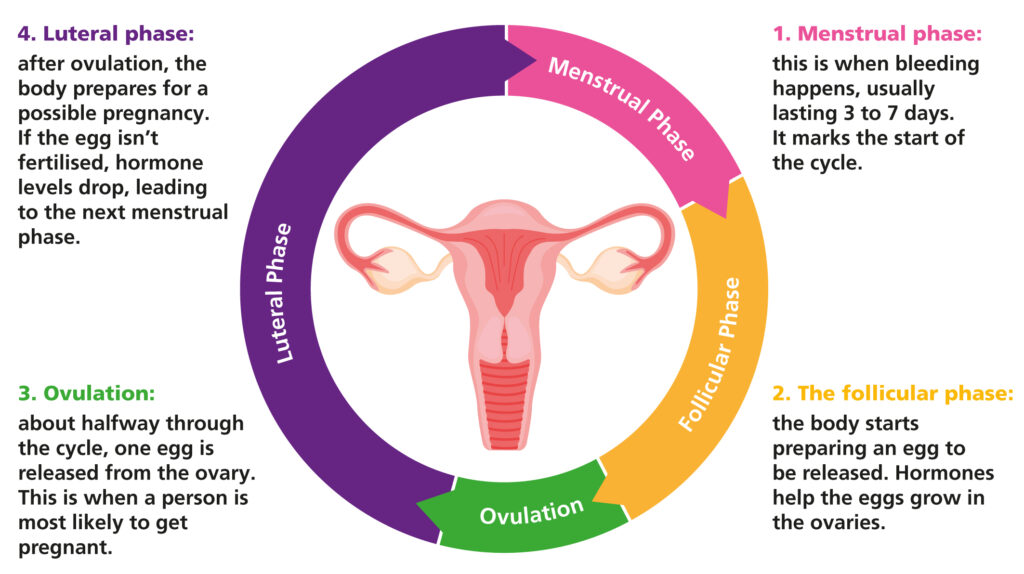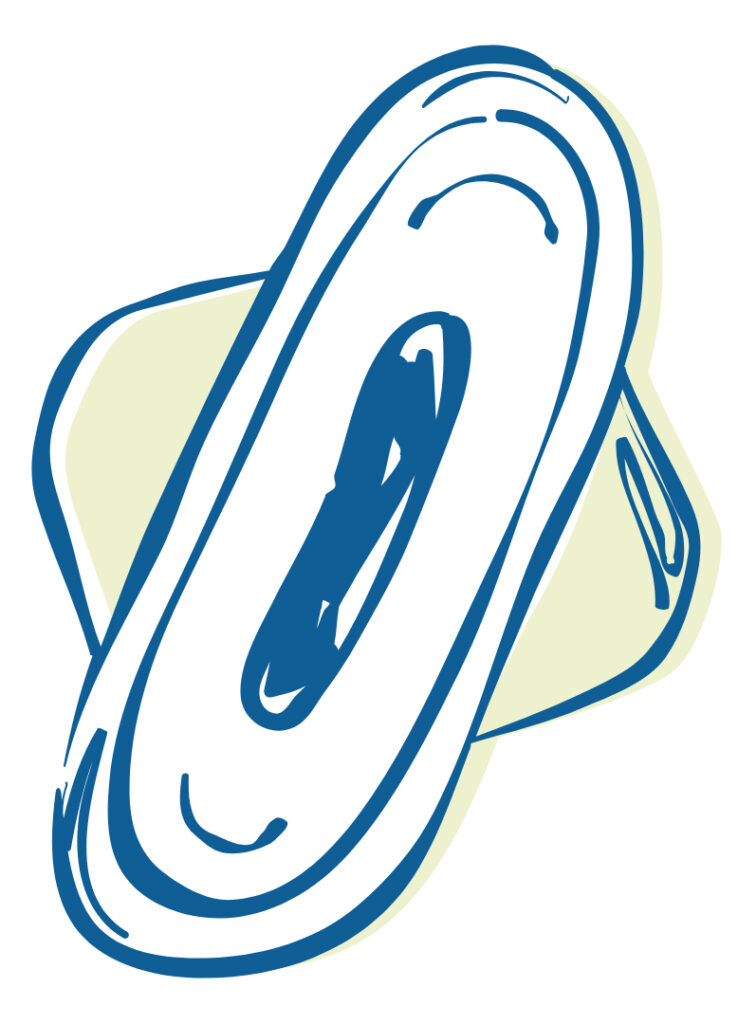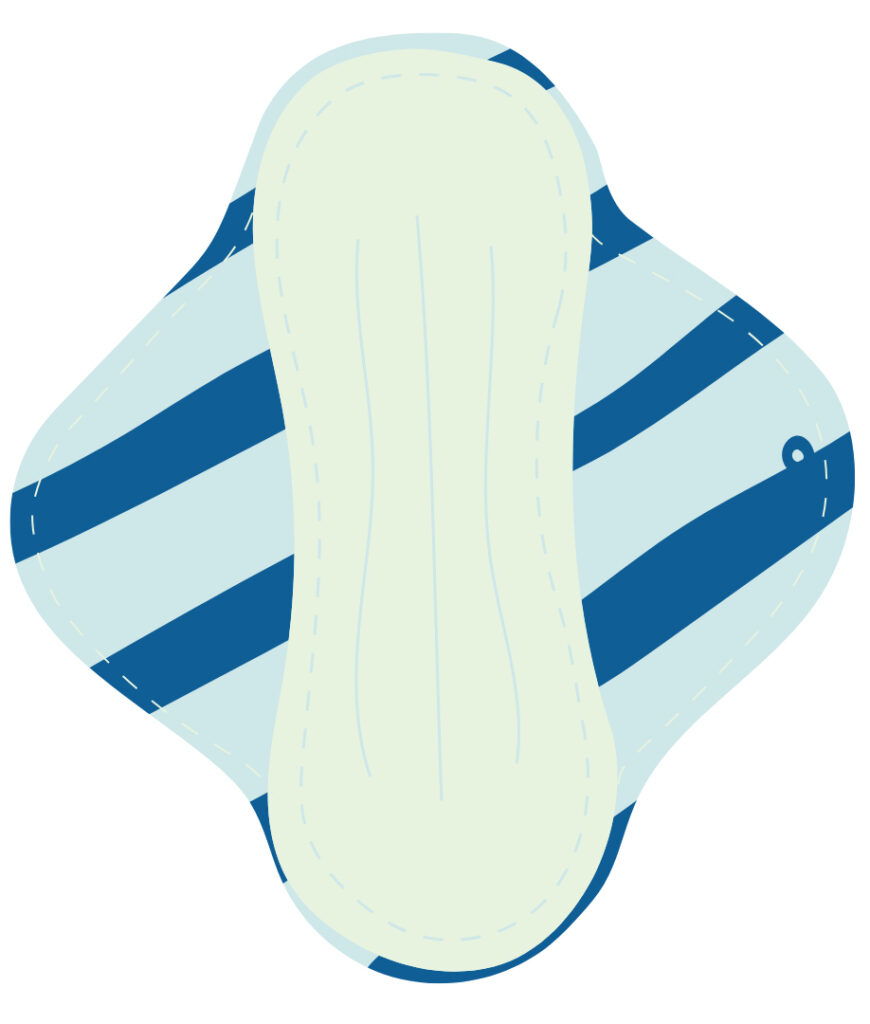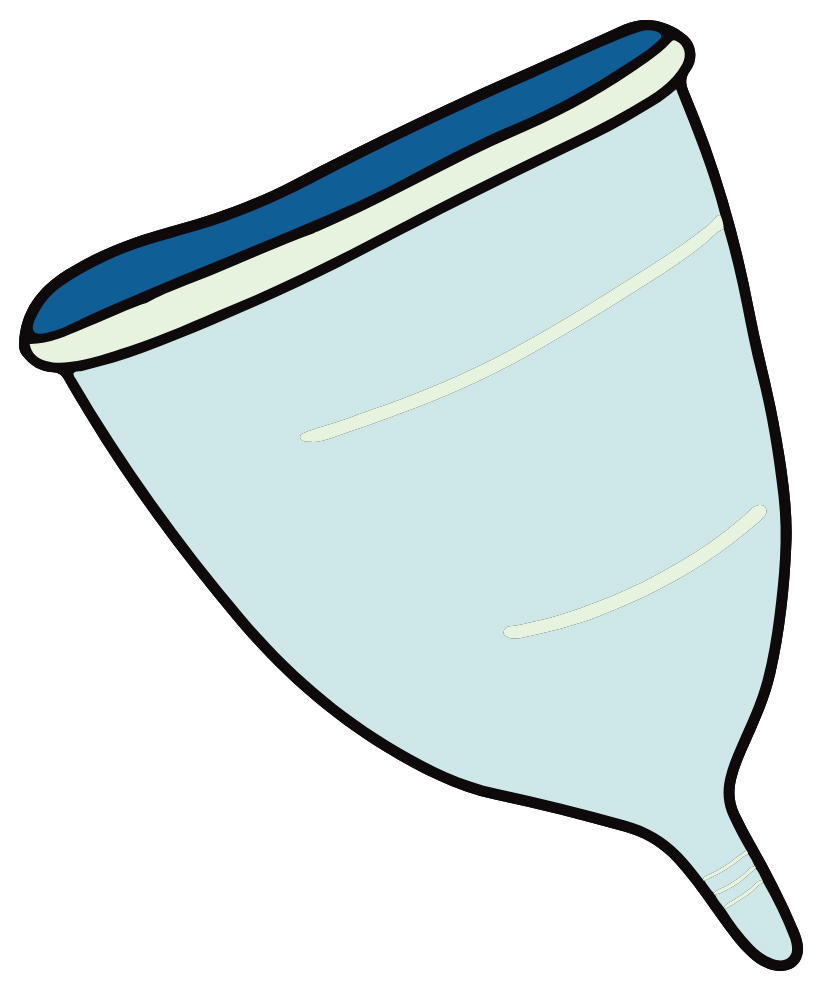Who has a period?
Most people with a uterus (womb) will start their period during puberty. You can learn more about puberty on the Puberty page.
This includes:
- Cisgender girls and women
- Transgender boys and men
- Non-binary people
- Intersex people
It’s important to recognise that not all women and girls have periods, and not all people who have periods are women and girls.
What is the menstrual cycle?
Roughly each month, the body goes through a natural cycle driven by hormones to prepare for a possible pregnancy. The first day of a menstrual cycle is the first day of a period, and the last day is the last day before the next period.
There are 4 main phases of the menstrual cycle:
- Menstrual Phase: This is when bleeding happens, usually lasting 3 to 7 days. It marks the start of the cycle.
- Follicular Phase: The body starts preparing an egg to be released. Hormones help the eggs grow in the ovaries.
- Ovulation: About halfway through the cycle, one egg is released from the ovary. This is when a person is most likely to get pregnant.
- Luteal Phase: After ovulation, the body prepares for a possible pregnancy. If the egg isn’t fertilized, hormone levels drop, leading to the next menstrual phase.

What is normal?
- Cycles between 21 to 35 days are typically considered regular, and most people bleed between 2 to 7 days each cycle.
- The colour of blood can range from pink to red to brown.
- Most people start their period between age 8 to 16, and will continue to get their period until menopause.
- Most periods contain around 1 to 5 tablespoons (20 to 90ml) of blood, with some days heavier (more blood) and some days lighter (less blood).
- It’s normal for blood to contain blood clots up to around the size of a 10p coin (2.5cm). These look like small lumps of thicker blood.
- Periods are different for everyone, so it’s about finding what’s normal for you.
Common symptoms
Many people who have periods will experience various symptoms that can be physical or emotional, caused by hormones and the uterus tightening to push the blood out. These symptoms are common and normal if experienced mildly, however it’s important to see a doctor if they are severe or affecting your life.
Symptoms can include:
- Breast pain
- Cramps
- Muscle pain
- Spots
- An upset stomach
- Diarrhoea or constipation
- Mood swings
- Feeling more irritable
- Difficulty concentrating
- Anxiety
- Less sociable
- Difficulty sleeping
How to look after you
There are lots of different ways that you can help to ease the symptoms of periods. Everyone is different so try out some different techniques and see what works best for you!
Here are some ideas to get you started:
- Hot water bottle – the warmth can help relax your muscles and ease cramps.
- Painkillers – if the pain is strong, talk to an adult about using safe pain relief.
- Movement – even light movement like stretching or walking can help reduce cramps and boost endorphins (happy hormones).
- Sleep – getting enough rest gives your body time to recover and feel better.
- Talking about it – sharing how you feel with someone you trust can really help, and they might have tips you haven’t thought of!
- Hydrate – drinking plenty of water can ease bloating and help you to feel more energised.
- Have a bath – a warm bath can relax your body and make you feel more comfortable.
- Self massage – gently massaging your tummy, lower back or sore muscles can help to relieve tension.
When to see a doctor
Whilst some symptoms are common, it’s really important to know when to see a doctor to get some extra help. You don’t have to deal with it alone and it could be a sign of something that needs treatment.
See your doctor if:
- Pain is severe or affecting your daily life
- You need to change your pad, tampon or period pants more than every 2 hours, or empty your cup more often than recommended
- You notice large clots bigger than 2.5cm
- You haven’t started your period by age 16
- Your periods become irregular
- You bleed for more than 7 days
- Your PMS feels severe
- You miss a period
- Anything changes that is not normal for you
Period products
Non-applicator tampon
Tampons are small tubes of cotton that are inserted into the vagina to absorb blood before it leaves the body.
Non-applicator tampons are inserted using your fingers to push the tampon inside the vagina, and removed by pulling a string that is attached at one end.
If the tampon is inserted correctly, you shouldn’t be able to feel it. However if it isn’t put in correctly then it could be uncomfortable or painful.
Tampons should be changed every 4 to 6 hours, depending on your flow, and come in a range of absorbencies.
It’s important to not leave a tampon in for too long, or it can cause infection or serious illness (Toxic Shock Syndrome).
After use, tampons should be thrown in the bin and not flushed down the toilet. These are not reusable.
Applicator tampon

Tampons are small tubes of cotton that are inserted into the vagina to absorb blood before it leaves the body.
Applicator tampons are inserted using a cardboard or plastic applicator to push the tampon inside the vagina, and removed by pulling a string that is attached at one end.
If the tampon is inserted correctly, you shouldn’t be able to feel it. However if it isn’t put in correctly then it could be uncomfortable or painful.
Tampons should be changed every 4 to 6 hours, depending on your flow, and come in a range of absorbencies.
It’s important to not leave a tampon in for too long, or it can cause infection or serious illness (Toxic Shock Syndrome).
After use, tampons should be thrown in the bin and not flushed down the toilet. These are not reusable.
Disposable pad

Disposable pads are strips of material that soak up blood once it leaves the vagina.
They are attached to underwear via a sticky underside and some have ‘wings’ that fold underneath to help stay in place and avoid leaks.
They are often the first period product a person will use when they first start their period due to how easy they are to use.
Disposable pads should be changed every 4 to 6 hours, depending on your flow, and come in a range of absorbencies.
After use, disposable pads should be thrown in the bin and not flushed down the toilet. These are not reusable.
Reusable pad

Reusable pads are strips of material like cotton, bamboo or hemp that soak up blood once it leaves the vagina.
They are usually attached to underwear via popper buttons attached to the ‘wings’ that fold underneath to help stay in place and avoid leaks.
Reusable pads should be changed every 4 to 6 hours, depending on your flow, and come in a range of absorbencies.
After use, reusable pads can be placed in a wet bag when out and about and then washed ready to be reused.
Reusable pads are more environmentally friendly than disposable products and can be more cost efficient with multiple use.
Period underwear

Period underwear is underwear made of absorbent materials that can be worn like normal underwear without the need to use other period products.
Period underwear lasts longer than pads or tampons, and should be changed every 8-12 hours, depending on your flow.
They come in a range of absorbencies and styles including bikini briefs, boxers, high waisted and more.
After use, period underwear can be placed in a wet bag if out and about and then washed ready to be reused.
Period underwear is more environmentally friendly than disposable products and can be more cost efficient with multiple use.
It is also possible to get period swimwear meaning you can go swimming on your period without having to insert anything.
Menstrual cup

Menstrual cups, or period cups, are small containers made from medical grade silicone that are inserted into the vagina using the fingers to collect the blood before it leaves the body, rather than absorbing it.
If the cup is inserted correctly, you shouldn’t be able to feel it. However, if it isn’t put in correctly then it could be uncomfortable or painful.
Menstrual cups lasts longer than pads or tampons, and should be emptied every 8 to 12 hours, depending on your flow.
It’s important to not leave a menstrual cup in for too long, or it can cause infection or serious illness (Toxic Shock Syndrome).
Menstrual cups are more environmentally friendly than disposable products as they are washed and reused and can last for up to 10 years.
Myth vs fact
Myth vs fact
Period blood is dirty. – MYTH
-
- Some people think periods are ‘dirty’ because of old-fashioned beliefs or a lack of understanding about how periods work. But period blood is just blood and tissue from the uterus – it’s completely natural, healthy and nothing to be ashamed of at all.
There are lots of different products to manage a period. – FACT
-
- You might be familiar with pads and tampons, but now there are lots of choices available like period underwear, reusable pads and menstrual cups. It’s all about finding what works best for your body and lifestyle.
You can go swimming during your period. – FACT
-
- Many people believe you can’t swim on your period because of worries about leaks or hygiene, but that’s not true! With the right product, like a tampon, menstrual cup or reusable period swimwear, you can swim just like any other day.
Periods are meant to be really painful. – MYTH
-
- Lots of people assume that pain is just a part of having a period because it’s been normalised by media or people around them. Whilst some cramping is common, severe pain isn’t normal and shouldn’t be ignored, and is a good sign to speak to your doctor.
There are more than 5000 slang terms for periods around the world. – FACT
-
- It’s true, and it shows how common periods are! But the huge number of slang terms also shows how people have often avoided saying the word ‘period’ because of embarrassment or stigma. It’s totally ok to have fun using slang terms, but it’s also important to feel comfortable using the right words too!
Periods are shameful and should be kept private. – MYTH
-
- Some people grow up thinking periods are something to hide or be embarrassed about, but that’s not true. They’re a normal and healthy part of life that around half of the world experience during their lifetime, and talking about them helps everyone feel more confident and supported.
You can’t have sex on your period. – MYTH
-
- Some people think that sex during your period is unsafe or wrong, but it’s actually a personal choice. If both people are comfortable and respectful, it’s completely ok! Everyone is different – some people might feel more sensitive or not in the mood, whilst others may be totally fine and enjoy it. What matters most is listening to your body and having open, honest communication.
You can still get pregnant on your period. – FACT
-
- It’s absolutely possible to still get pregnant during your period, especially if you have a shorter cycle or ovulate early in your cycle, as sperm can live for several days inside the uterus. This means contraception is still important to use even when you’re on your period. Learn more about contraception on the Sexual Health page.